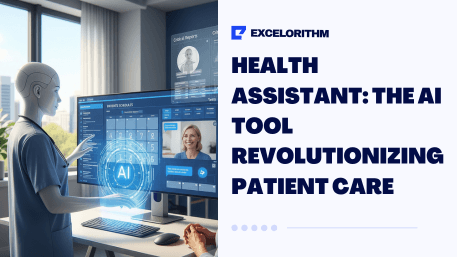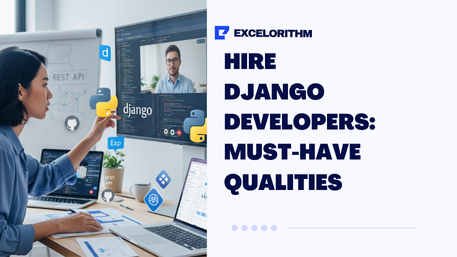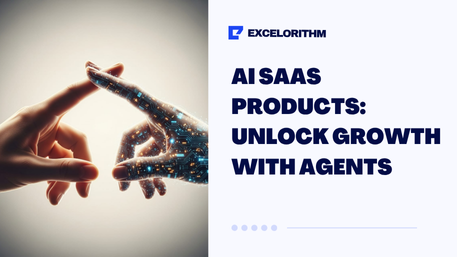1. Introduction
When businesses consider investing in software solutions, the conversation often revolves around upfront costs. However, the true financial impact of any software extends far beyond its initial price tag. This is where understanding the Total Cost of Ownership (TCO) becomes critical. TCO provides a comprehensive view of all expenses associated with a software solution throughout its lifecycle, from acquisition to retirement.
For companies aiming to make strategic decisions, TCO acts as a financial compass, guiding them toward a solution that aligns with both short-term budgets and long-term goals. It encompasses a range of costs, including licensing, implementation, training, maintenance, and eventual decommissioning. Overlooking these aspects can lead to significant financial pitfalls, as hidden costs often surface well into the operational phase of software usage.
TCO is especially vital in today’s competitive landscape, where choosing between custom-built software and off-the-shelf solutions can be challenging. Each option carries unique implications for costs, flexibility, and scalability. Without a clear understanding of TCO, businesses risk making decisions based solely on immediate savings, which can result in higher expenses over time.
By diving into the nuances of TCO, this article equips readers with the knowledge needed to evaluate software investments holistically, ensuring both cost efficiency and operational effectiveness.
1.1 Understanding Total Cost of Ownership (TCO)
The Total Cost of Ownership (TCO) is a financial framework that helps businesses measure the true cost of a software solution beyond its initial purchase or development. It provides a complete picture of all expenses incurred throughout the software’s lifecycle, making it an invaluable tool for informed decision-making.
At its core, TCO goes beyond surface-level calculations by factoring in costs associated with acquisition, operation, and eventual retirement of the software. For instance, the initial cost of purchasing a software license or developing a custom solution is just the tip of the iceberg. Hidden expenses such as ongoing maintenance, training, upgrades, compliance, and end-of-life transitions often account for a significant portion of the total investment.
By offering a long-term perspective, TCO empowers businesses to evaluate the financial implications of their software choices comprehensively. It highlights the difference between what may appear to be a cost-effective solution initially and what proves to be sustainable over time.
Whether comparing custom-built software with off-the-shelf alternatives or assessing the impact of operational inefficiencies, understanding TCO is vital. It ensures that businesses can anticipate financial commitments accurately, plan budgets effectively, and avoid the pitfalls of unforeseen expenses. In today’s rapidly evolving digital landscape, TCO serves as a strategic lens to view software investments with clarity and foresight.
2. Key Components of TCO
Understanding the Total Cost of Ownership (TCO) requires breaking it down into its core components. These elements reveal the hidden financial layers of software ownership, helping businesses plan more effectively and avoid unexpected costs. Below, we explore the key components that collectively shape TCO:
2.1 Acquisition Costs
Acquisition costs encompass the initial expenses incurred when purchasing or developing a software solution. These are the most visible and straightforward costs but are often underestimated in their scope.
- Licensing or Development Fees: For off-the-shelf software, this includes the cost of licenses. For custom software, it includes design, development, and testing expenses.
- Implementation Costs: Deploying software often requires configuring systems, migrating data, and integrating it with existing tools.
- Training Costs: Employees need to be trained to use the new software effectively, which can involve workshops, manuals, or external training sessions.
While these costs are upfront, they lay the foundation for the software’s long-term use and impact.
2.2 Operational Costs
Once the software is in use, operational costs become the primary financial burden. These are recurring expenses that businesses must account for throughout the software’s lifecycle.
- Maintenance and Upgrades: Regular updates are crucial for security, performance, and feature enhancements.
- Subscription Fees: Many modern tools operate on a subscription model, with monthly or annual payments.
- Technical Support: Access to customer support, troubleshooting, and helpdesk services is often a necessary ongoing expense.
- Downtime Costs: If the software experiences outages or inefficiencies, businesses face productivity losses and, in some cases, revenue declines.
- Compliance and Security: Ensuring that the software meets industry standards and remains secure from cyber threats requires continuous investment.
Operational costs can vary significantly based on the software’s complexity, scalability, and the business’s specific needs.
2.3 Retirement Costs
The lifecycle of software doesn’t end with its operational phase. Eventually, systems must be retired, bringing unique costs that are often overlooked.
- Decommissioning and Data Migration: Shutting down a system involves securely transferring data to a new platform or archiving it for compliance purposes.
- Training for Transition: Employees must adapt to new software, which entails additional training expenses.
- Environmental Disposal: In cases involving hardware integration, businesses must responsibly dispose of outdated systems.
Retirement costs can be substantial, particularly when transitioning from legacy systems, and must be accounted for early to avoid financial shocks.
3. Comparing Custom Software and Off-the-Shelf Solutions
Choosing between custom software and off-the-shelf solutions is one of the most critical decisions businesses face when considering new software. While both options serve the same overarching purpose of meeting operational needs, they differ significantly in terms of flexibility, scalability, and the Total Cost of Ownership (TCO). To make an informed choice, businesses must evaluate these differences carefully.
3.1 Cost Differences
The most apparent difference between custom software and off-the-shelf solutions lies in their initial and long-term costs.
- Custom Software: Custom solutions often come with a high initial investment. The costs cover everything from requirements analysis and design to development, testing, and deployment. However, these costs are tailored to the unique needs of the business, ensuring that unnecessary features are avoided, and essential functionalities are prioritized.
- Off-the-Shelf Solutions: These are generally more affordable upfront. Licensing fees or subscriptions for commercial software are typically lower than the development costs of custom solutions. However, businesses might incur additional expenses for customization, integration, and adapting workflows to fit the software.
Over time, the higher upfront costs of custom software can pay off through reduced operational inefficiencies, while the lower upfront costs of off-the-shelf solutions may be offset by hidden expenses.
3.2 Flexibility and Scalability
Another critical distinction is the ability of the software to adapt to a business’s evolving needs.
- Custom Software: Designed specifically for a business, custom software offers unparalleled flexibility. As a business grows, features can be added or modified to support scaling operations. While these updates come at a cost, they are typically aligned with long-term goals, reducing the risk of obsolescence.
- Off-the-Shelf Solutions: These solutions are developed for a broad audience and may not meet specific needs without costly customizations. Scalability can also become an issue as businesses outgrow the software’s capabilities, forcing them to transition to alternative systems.
3.3 Maintenance and Support
The ongoing costs and reliability of maintenance and support also differ between the two options.
- Custom Software: Maintenance for custom solutions is usually handled by the development team or a contracted provider, ensuring that the software remains optimized for its intended purpose. However, businesses must budget for updates, bug fixes, and evolving technology needs.
- Off-the-Shelf Solutions: These come with built-in support plans, but businesses are often limited by the provider’s update schedule and priorities. Critical updates or new features may not align with specific business needs, leading to delays or inefficiencies.
3.4 Long-Term Value
- Custom Software: While it may demand a higher investment upfront, custom software provides long-term value by delivering tailored solutions and minimizing recurring operational inefficiencies.
- Off-the-Shelf Solutions: Although initially cost-effective, off-the-shelf software may result in higher TCO due to hidden costs such as licensing renewals, compatibility issues, or forced upgrades.
4. Common Mistakes in Calculating TCO
Accurately calculating the Total Cost of Ownership (TCO) for software is essential for businesses to make sound financial decisions. However, many organizations fall into common pitfalls that lead to underestimated costs and unforeseen financial burdens. By recognizing and addressing these mistakes, businesses can create a more precise and actionable TCO analysis.
4.1 Ignoring Indirect Costs
One of the most significant mistakes businesses make is focusing solely on direct costs, such as licensing or development fees, while overlooking indirect costs.
- Training and Onboarding: Costs associated with training employees to use new software can quickly add up, especially for complex systems.
- Downtime: Many organizations fail to account for the productivity losses that occur during software implementation or maintenance.
- Hidden Operational Costs: Expenses such as data migration, system upgrades, or managing integrations with other tools are often excluded from initial calculations.
Indirect costs can significantly impact the overall TCO and should be given equal weight during the planning phase.
4.2 Overlooking Retirement Costs
The lifecycle of software doesn’t end with its operational phase, yet many businesses fail to account for retirement costs in their TCO analysis.
- Decommissioning Expenses: Securely retiring a software system involves costs for data migration, archiving, and decommissioning.
- Transition Costs: Switching to a new system often requires additional training, implementation, and data synchronization expenses.
- Post-Retirement Compliance: Ensuring data security and regulatory compliance even after retiring software can be costly if overlooked.
Ignoring these costs can lead to unexpected financial burdens during the transition to new systems.
4.3 Misjudging Software Lifespan
Another common mistake is underestimating or overestimating the software’s operational lifespan.
- Underestimating Lifespan: Businesses may switch to new software prematurely, incurring unnecessary costs in upgrades or replacements.
- Overestimating Lifespan: On the other hand, relying on outdated systems for too long can result in increased maintenance costs, security vulnerabilities, and inefficiencies.
A realistic evaluation of a software’s lifespan is crucial to accurately projecting its TCO.
4.4 Failing to Align with Business Goals
Many TCO calculations focus solely on financial metrics, ignoring how the software aligns with broader business objectives.
- Short-Term Focus: Prioritizing immediate cost savings without considering long-term operational needs can result in higher expenses over time.
- Misaligned Investments: Choosing software that doesn’t support future scalability or changing business requirements leads to wasted resources.
5. Best Practices for Accurate TCO Calculation
Calculating the Total Cost of Ownership (TCO) for software is a complex process, but adopting best practices can help businesses achieve a more precise and actionable analysis. By following these guidelines, organizations can avoid unexpected expenses, make informed decisions, and maximize the value of their software investments.
5.1 Comprehensive Cost Identification
One of the first steps in accurate TCO calculation is identifying all potential costs throughout the software’s lifecycle. This includes both direct and indirect costs.
- Account for All Lifecycle Phases: Consider acquisition, operational, and retirement costs. These include licensing, implementation, training, maintenance, upgrades, and decommissioning expenses.
- Include Hidden Costs: Pay attention to overlooked areas such as downtime, integration challenges, compliance, and data security measures.
- Use Industry Benchmarks: Leverage data from similar projects to estimate less tangible costs, such as productivity losses during deployment or training.
A detailed cost inventory ensures that no critical expenses are omitted from the TCO analysis.
5.2 Leverage TCO Tools and Frameworks
Specialized tools and frameworks can simplify the TCO calculation process and enhance accuracy.
- Cloud-Based Calculators: Tools like the AWS TCO Calculator, Google Cloud Platform TCO Tool, or Microsoft Azure Cost Calculator help estimate costs for cloud-based software and infrastructure.
- Comprehensive Management Platforms: Platforms like CloudHealth by VMware offer centralized visibility into cost optimization and management across multiple systems.
- Custom Frameworks: For unique software needs, businesses can collaborate with financial analysts or consultants to develop tailored TCO frameworks.
These tools can provide detailed insights into cost projections and help businesses avoid manual calculation errors.
5.3 Monitor Costs Continuously
TCO is not a one-time calculation; it requires continuous monitoring and adjustment to remain relevant.
- Track Operational Metrics: Regularly evaluate software performance, uptime, and maintenance needs to adjust cost estimates.
- Adapt to Business Changes: As businesses grow or adopt new strategies, software requirements and associated costs may evolve. Revisiting TCO ensures alignment with current objectives.
- Plan for Contingencies: Allocate resources for unexpected events such as cyberattacks, regulatory changes, or vendor price hikes.
Continuous monitoring allows businesses to anticipate challenges and take proactive steps to manage costs.
5.4 Align TCO Analysis with Strategic Goals
.TCO calculations should go beyond financial metrics to support broader business objectives.
- Evaluate Long-Term ROI: Consider how the software will impact productivity, scalability, and operational efficiency over its lifetime.
- Prioritize Business Needs: Focus on solutions that align with both current and future goals, ensuring flexibility and sustainability.
- Engage Stakeholders: Involve cross-functional teams, including IT, finance, and operations, to gain a holistic perspective on software value.
By aligning TCO analysis with strategic goals, businesses can ensure their software investments deliver maximum value.
6. Why TCO Matters for Decision-Making
In the world of software investments, the Total Cost of Ownership (TCO) is more than just a financial metric—it’s a strategic tool that helps businesses make informed, forward-thinking decisions. For decision-makers, understanding TCO is critical for balancing short-term costs with long-term benefits, ensuring the alignment of technology investments with business goals, and mitigating risks that could lead to financial strain.
6.1 A Holistic Perspective on Costs
TCO provides a complete view of all expenses associated with software, extending beyond initial acquisition costs to include operational and retirement phases. This holistic approach ensures decision-makers don’t underestimate the true financial impact of their choices.
- Beyond the Purchase Price: Many organizations focus solely on upfront costs, such as licensing or development fees, without considering ongoing expenses like maintenance, upgrades, or compliance.
- Identifying Hidden Costs: TCO highlights indirect expenses, such as training, downtime, and integration challenges, that can significantly impact the overall budget.
By capturing the full financial picture, TCO enables businesses to avoid surprises that often arise from overlooked costs.
6.2 Supporting Long-Term Strategic Goals
Software decisions are rarely short-term; they have implications that ripple across a company’s operations for years. TCO provides the insights needed to align these investments with broader strategic objectives.
- Planning for Scalability: A clear understanding of TCO helps businesses choose solutions that can grow with their needs, avoiding costly replacements or overhauls.
- Maximizing ROI: By evaluating both costs and benefits, decision-makers can prioritize solutions that deliver the greatest value over time, even if they require higher upfront investments.
- Ensuring Financial Sustainability: TCO analysis helps businesses allocate resources effectively, balancing innovation with budget constraints.
6.3 Reducing Risk and Enhancing Efficiency
Ignoring TCO can lead to financial and operational risks, including unexpected expenses and inefficiencies that hinder business performance.
- Avoiding Overcommitment: Without TCO, businesses may overcommit to solutions with hidden costs that exceed their budgetary capacity.
- Improving Vendor Negotiations: Armed with a detailed TCO analysis, decision-makers are better positioned to negotiate favorable terms with software vendors.
- Minimizing Operational Disruptions: Understanding the lifecycle costs of software helps mitigate risks like downtime or outdated technology that can disrupt productivity.
7. Conclusion
The Total Cost of Ownership (TCO) is far more than a financial calculation—it’s a strategic lens through which businesses can evaluate the true impact of their software investments. By considering not only the upfront costs but also the long-term operational and retirement expenses, TCO empowers decision-makers to take a holistic view of their technology choices.
In today’s dynamic and competitive landscape, where technology plays a pivotal role in business success, overlooking the comprehensive costs of software can lead to significant risks. Unanticipated expenses, misaligned investments, and operational inefficiencies can derail budgets and hinder growth. TCO serves as a safeguard, helping businesses make well-informed decisions that balance cost efficiency with long-term value.
Whether a company opts for custom software tailored to its unique needs or a more readily available off-the-shelf solution, understanding TCO ensures that these decisions are made with clarity and foresight. It helps businesses align their technology strategies with their operational goals, enabling them to scale efficiently, minimize risks, and achieve sustainable growth.
By adopting TCO as a core component of their decision-making process, businesses can not only optimize their technology investments but also set the stage for innovation and resilience in an ever-evolving market. TCO is not just a tool—it’s a pathway to smarter, future-ready choices.




